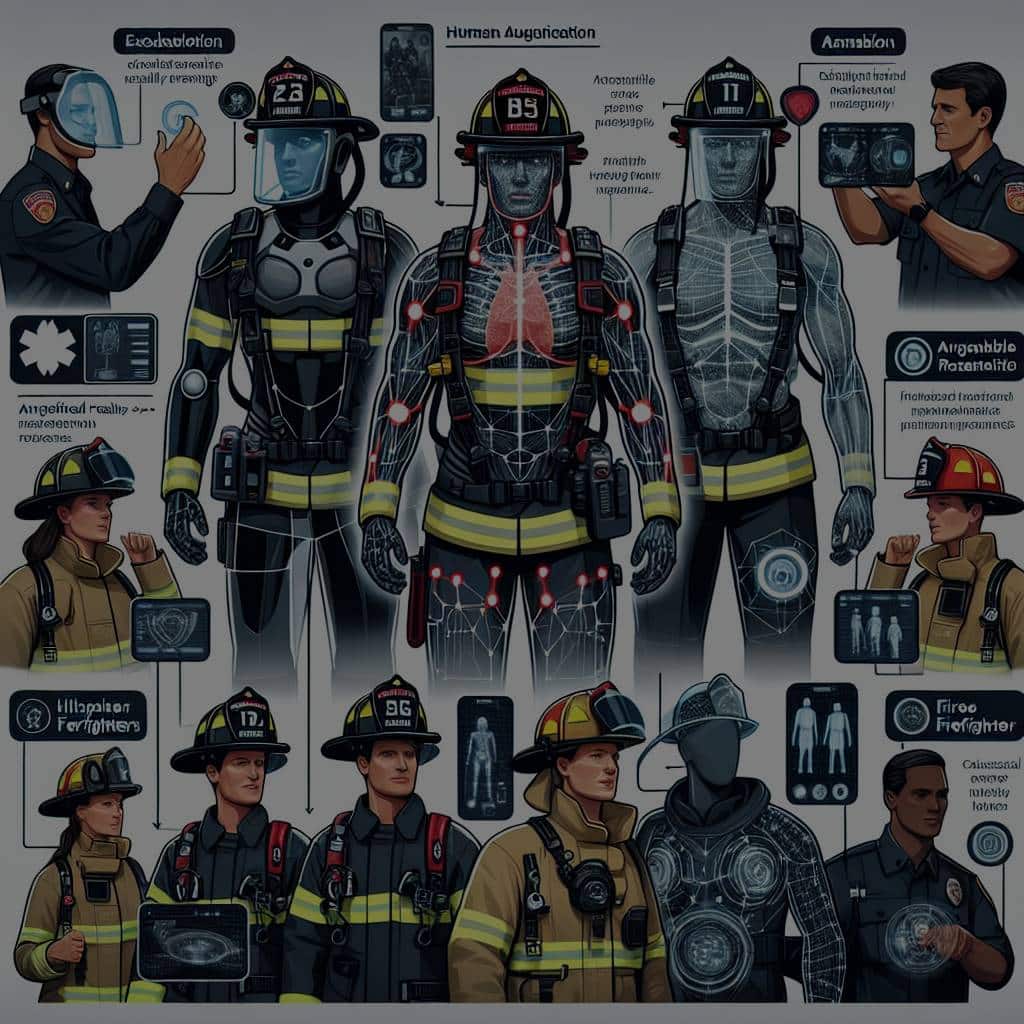How Could Human Augmentation Devices Enhance the Capabilities of Firefighters?

Being a firefighter has always been a dangerous profession. However, as technology advances, so does the ability to protect our brave first responders from harm and improve their abilities on the job. Recently, human augmentation devices have emerged as a potential tool to enhance the capabilities of firefighters. These devices, when coupled with thorough training, can significantly improve the safety and efficiency of firefighters, providing them with the technological assistance they need to perform their duties under intense strain.
This article will delve into how these advancements could revolutionize the firefighting industry, we will analyze the integration of technology in fire departments, the role of data in fire safety, the potential of augmented reality in firefighting, and the perception of these changes within the industry.
Also read : How can MyImageGPT be used in education ?
The Integration of Technology in Fire Departments
In recent years, many fire departments have recognized the utility of technological tools in their operations. Advances in technology have made it possible to develop systems that can assist firefighters in a variety of ways, from providing real-time data on a fire’s location and intensity, to supplying essential tools for search and rescue operations.
One such technological advancement is the DOI (Device Orientation Identifier), a system that enables firefighters to quickly and accurately locate their team members in a building. This system uses a combination of GPS and indoor mapping technology to create a real-time display of a fire scene, showing the positions of all firefighters and potential danger zones. The DOI has been praised for its ability to reduce confusion and improve coordination during high-stress situations.
Also to see : What Are the Challenges and Opportunities in Electric Aircraft Battery Technology?
In addition to the DOI, other human augmentation devices, such as MSA (Movement and Situation Awareness) equipment, have been introduced. MSA devices provide firefighters with enhanced physical capabilities, allowing them to carry more equipment, move faster, and withstand higher temperatures. These devices have the potential to drastically improve the safety and effectiveness of firefighters, reducing the risk of injury and increasing the chances of successful rescues.
The Role of Data in Fire Safety
Another crucial aspect of integrating technology into firefighting is the collection and use of data. Data plays a key role in fire safety, as it allows firefighters to make informed decisions based on the most accurate and up-to-date information available.
One example of a data-driven system is the Firefighter Augmentation System. This system uses a combination of sensors and algorithms to collect and analyze data from the fire scene. This data can include information on the fire’s size, intensity, and rate of spread, as well as environmental factors such as wind speed and direction.
This system allows firefighters to understand the nature of the fire better and predict its future behavior. This information can be used to develop more effective firefighting strategies, ultimately leading to improved safety and efficiency.
The Potential of Augmented Reality in Firefighting
One of the more exciting technological advancements in recent years is the development of augmented reality (AR) systems. Augmented reality overlays digital information onto the user’s environment, providing them with valuable insights that can assist in their tasks.
In firefighting, AR systems can be used to provide real-time information on the fire’s location and intensity, alert firefighters to potential hazards, and guide them through complex buildings. These systems can also be used for training purposes, allowing firefighters to practice their skills in realistic, yet safe, environments.
The use of AR in firefighting has the potential to increase the safety and effectiveness of firefighters significantly. By providing them with accurate, real-time information, firefighters can make better decisions, reduce the risk of injury, and increase the success rate of their operations.
The Perceived Impact of Technology on Firefighting
While the potential benefits of technology in firefighting are clear, it is important to consider the perception of these changes within the industry. Many firefighters appreciate the potential advantages of these new technologies. However, there is also some apprehension about their implementation.
Concerns about reliance on technology, potential malfunctions, and the cost of implementing these systems are common. Therefore, it is crucial that these technologies are introduced in a way that addresses these concerns. Providing thorough training, ensuring the reliability of the technology, and demonstrating its potential for enhancing safety and efficiency will be critical in gaining the acceptance of firefighters.
In conclusion, the integration of technology, particularly human augmentation devices, into firefighting has the potential to revolutionise the industry. These technologies can improve the safety and effectiveness of firefighters, leading to improved outcomes for both firefighters and the communities they serve. The use of data and augmented reality in firefighting also offers significant potential benefits, but these technologies must be introduced in a way that addresses potential concerns within the industry.
The Promise of Artificial Intelligence and Virtual Reality in Firefighting
In the realm of human augmentation, artificial intelligence (AI) and virtual reality (VR) are the two technologies making waves. In firefighting, both AI and VR can play instrumental roles in improving safety and efficiency and promoting a better understanding of high-risk situations.
AI-powered systems offer several potential benefits. For instance, they can monitor real-time data from various sensors, such as temperature, humidity, and smoke density, to generate actionable insights. The AI can analyze the collected data to predict the fire’s behavior, enable efficient decision making, and improve the overall outcome.
AI can also integrate with augmented reality to provide a ‘connected firefighter’ platform. This platform can deliver real-time updates about the firefighter’s physical condition, such as heart rate or fatigue levels, providing a new layer of safety.
On the other hand, VR plays a vital role in training. Firefighters can use VR to simulate real-life scenarios, allowing them to practice their skills in a safe environment. It provides the opportunity for firefighters to experience various situations, from residential to industrial fires, and learn effective strategies to combat them.
Moreover, at the international conference in New York, USA, discussions surrounded the potential of VR in creating a ‘map view’ of the fire scene. Fire trucks equipped with VR could allow the crew to see through smoke, identify fire hot spots, and locate victims, all from a safe distance.
Overall, the incorporation of AI and VR in firefighting is an exciting development. It has the potential to bring about significant changes in the fire service, improving the safety and efficiency of firefighting operations.
Conclusion: The Future of Human Augmentation in Firefighting
As evidenced by recent technological advancements and growing interest in the field, human augmentation is poised to become a significant aspect of firefighting in the near future. The integration of technologies such as DOI, MSA safety devices, AI, VR, and other real-time data analysis tools are steadily reshaping the traditional fire service.
These innovations aim to enhance the capabilities of firefighters, allowing them to respond to emergencies more quickly, accurately, and safely. As a result, these advanced technologies not only save the lives of those in danger but also protect our brave firefighters from potential harm.
However, as with any transformative change, acceptance and implementation can be challenging. Concerns regarding reliance on technology, potential system malfunctions, and the cost of new implementations are valid. Therefore, each fire department must address these concerns while integrating new technologies.
This can be achieved through extensive training, ensuring system reliability, and demonstrating the potential positive impacts of these technologies on the safety and efficiency of the fire service. With time, it is expected that the benefits of these human augmentation devices will outweigh the initial apprehension, leading to their widespread adoption in fire services across the globe.
In closure, the landscape of firefighting is changing rapidly. The integration of human augmentation devices, data analysis, and augmented reality technologies promises to revolutionize the industry. As technology continues to advance, we can expect to see even more dramatic improvements in firefighter safety and efficiency in the years to come.
